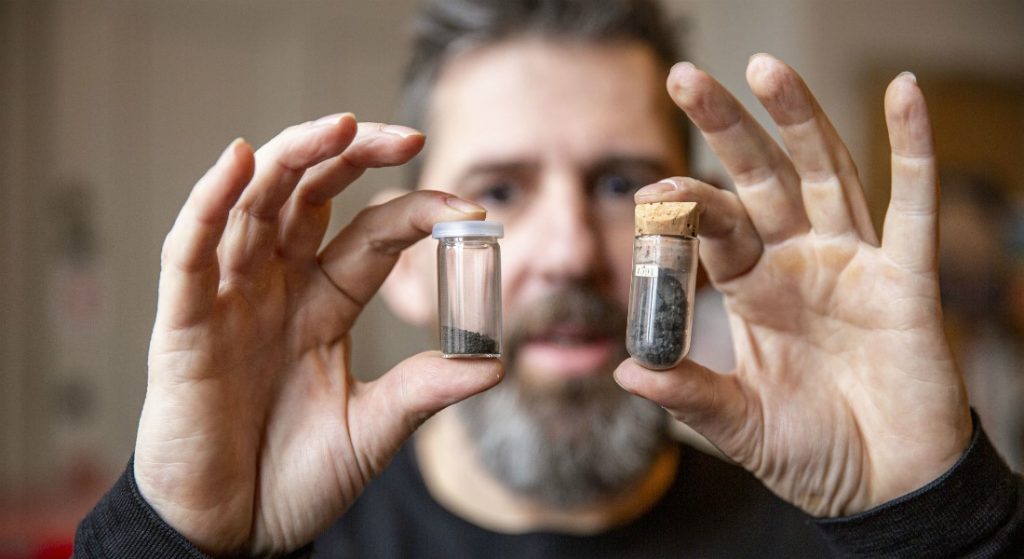Discovery from previous DNRF center breaks theory about formation of the Earth
With a special stone meteorite, researchers from the research center STARPLAN at the University of Copenhagen have shown that the Earth formed much faster than hitherto believed. The discovery is based on research conducted during the DNRF’s 10-year grant to STARPLAN from 2009-2019. The result provides new information about both planet formation and the likelihood that water and life exist in other places in the universe. The study was made in collaboration with researchers from France and was recently published in the scientific journal Science Advances.

According to the previous theory about planet formation, the precursor of our planet, the so-called proto-Earth, was formed by random collisions between large objects in the universe over several million years. Now, a new study from the former DNRF center STARPLAN at the University of Copenhagen shows that the proto-Earth was formed in about five million years. Astronomically speaking, that is extraordinarily fast, and the discovery supports a new theory that postulates that planet formation is caused by the accumulation of cosmic dust and not by collisions between large heavenly bodies.
“The other idea is that we start from dust, essentially. Millimeter-sized objects, all coming together, raining down on the growing body and making the planet in one go. Not only is this implication of the rapid formation of the Earth interesting for our solar system. It is also interesting to assess how likely it is for planets to form somewhere else in the galaxy,” said Martin Schiller, associate professor at STARPLAN and lead author behind the study.
The discovery from STARPLAN is based on research conducted during the term of the DNRF grant to the center and the result was provided by the hitherto most accurate measurements of iron isotopes in different meteorites. By examining the isotopic mix ratio in the metallic element, the researchers found only one meteoritic material with a combination like the Earth’s. These were the CI-chondrites, a special type of stone meteorite. CI-chondrites are some of the meteorite types that have changed least since the formation of the solar system and thus the closest one can get to its basic material.
Cosmic dust and gas
Combined with gases, the cosmic dust from the CI-chondrites formed a plate of material that gathered into the sun. Excess material from the cosmic plate formed the planets, including the proto-Earths’ iron core, by the way the metallic element from the planet’s cape was pulled into its center – a process that took around five million years, according to the researchers, and not several million years as a result of random collisions between large objects in the universe.
“If the Earth’s formation was a random process where you just smashed bodies together, you would never be able to compare the iron composition of the Earth to only one type of meteorite. You would get a mixture of everything,” said Schiller.
The new theory from STARPLAN about planet formation through accumulated cosmic dust also means that the same process can occur in other places in the universe. Therefore, new planets are likely to be formed much faster than if they were solely formed by random collisions in space.
“Now we know that planet formation happens everywhere, that we have generic mechanisms that work and make planetary systems. When we understand these mechanisms in our solar system, we might make similar inferences about other planetary systems in the galaxy, including at which point and how often water is accreted,” said head of center at STARPLAN Professor Martin Bizzarro. He added:
“If the theory of early planetary accretion really is correct, water is likely just a by-product of the formation of a planet like the Earth – making the ingredients of life, as we know it, more likely to be found elsewhere in the universe.”
